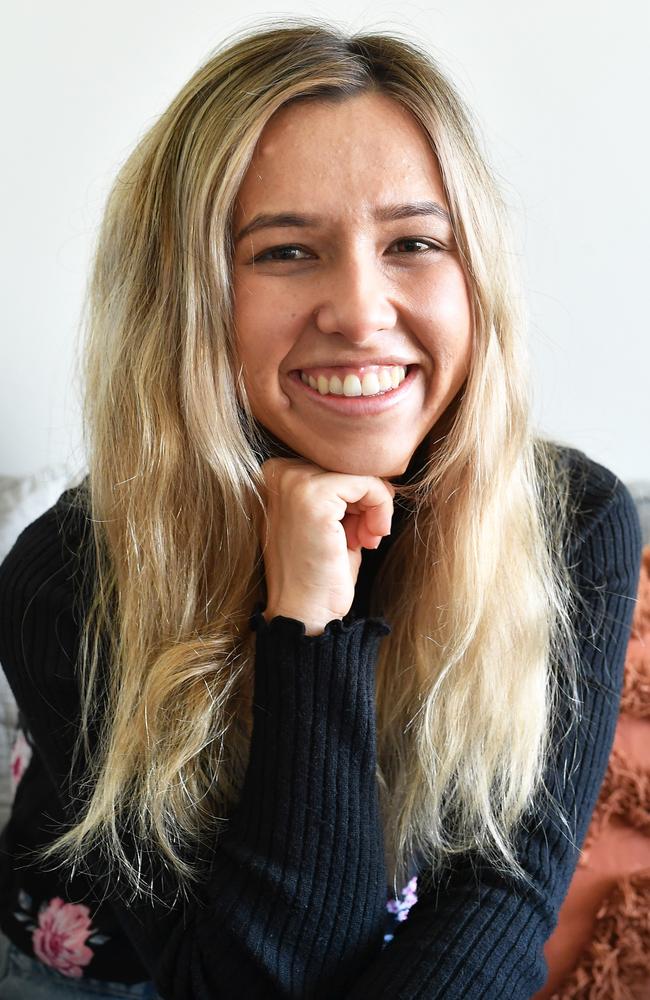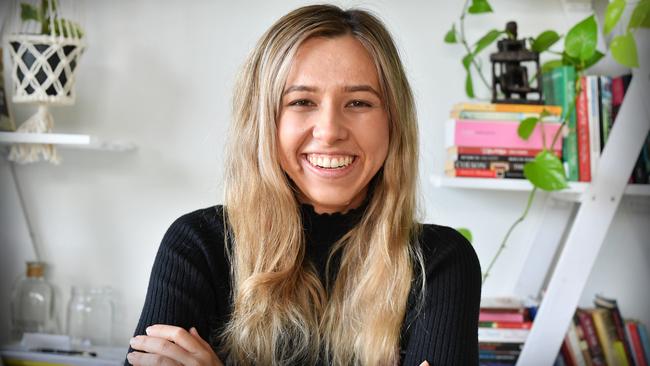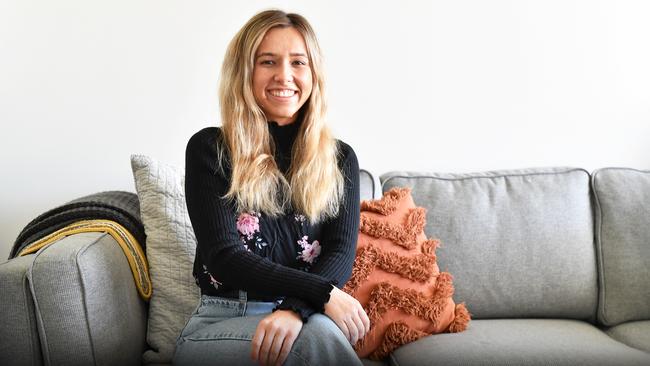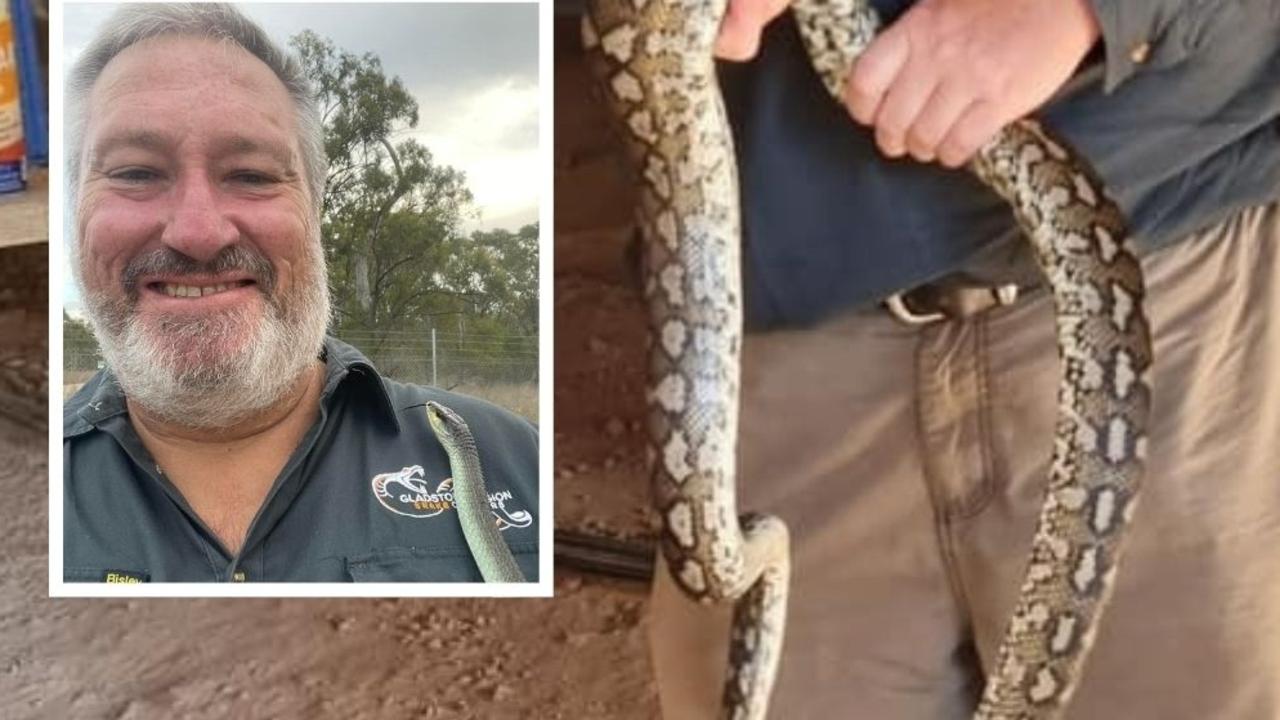Sunshine Coast’s Emmily Giddy speaks out experience with neurofibromatosis as new funding is granted
A young Sunshine Coast woman says a common genetic disorder led her to a “terrible cycle of comparison” as new funding gives her hope for a cure.

Sunshine Coast
Don't miss out on the headlines from Sunshine Coast. Followed categories will be added to My News.
The first time Emmily Giddy noticed she was different was when a dance teacher stopped to stare at her.
The young Sunshine Coast woman was only 11 at the time and although she was wearing a leotard like the other students in her class, Ms Giddy stood out.
“In this moment the room fell silent and I felt like all eyes were on me,” she said.
“I had no words and felt extremely self-conscious.”
Ms Giddy’s teacher was puzzled by the neurofibromas covering her skin, a condition she has lived with since she was a child.
She said her mum first noticed the bumps at age 5 but believed her daughter just had a few extra birth marks.

“But she was concerned so she obviously went to the doctor and then they diagnosed me with neurofibromatosis type 1,” Ms Giddy said.
Neurofibromatosis causes tumours to develop anywhere in the nervous system, from on the body to the brain.
The genetic disorder can present in numerous ways and symptoms are often mild, but can include hearing loss, learning impairment, heart and blood vessel problems, loss of vision and severe pain.
In Australia it affects one in every 2500 people and on average, every three days a child is born with neurofibromatosis.
Ms Giddy considers herself one of the lucky ones.
“Growing up, especially when I was a lot younger, I didn’t ever really seem to care or notice that something was different about me,” she said.
“I’m very lucky that my condition hasn’t really affected me other than obviously just physically looking a bit different.
“But that’s the thing with neurofibromatosis, it affects people so vastly.”
Despite living a happy childhood, Ms Giddy said the constant queries about her condition began to have an impact on her self image.

“For me, these questions of curiosity began a terrible cycle of comparison and even the most insignificant of lumps and spots carried so much weight and sadness for me,” she said.
“As you get older and you become a teenager, you become so conscious of the way you look.
“The main issue with my condition was more self esteem issues than anything, because you just want to look normal.”
At 16 Ms Giddy had her first surgery to remove one of the larger tumour growths on her hip in hopes of feeling like an average teen.
“Having the surgery didn’t really make a difference to my self esteem which was really unfortunate at the time,” she said.
Now in her late 20s, Ms Giddy said it wasn’t until she realised that her looks were the “least interesting thing” about her that she began to let go of her insecurities.
“Yes I look a little bit different, yes I have these lumps and these tumour growths, but I’m still a great person, I’m still loved and wanted and capable of achieving so many things,” she said.
“I still have my days when I don’t feel great about myself, but they don’t stop me from living my life.”
Ms Giddy said raising awareness about her condition would help others like her learn to love themselves.
“It affects a lot more people than you would actually know,” she said.

“And because it causes these physical deformities, people kind of shy away from wanting to talk about it because they’re ashamed of it.
But she said that would hopefully change as awareness of the disorder increased.
“If only my 16-year-old self had understood that by opening up and bring neurofibromatosis out of the shadows, support would have followed.”
More than $4.6m has been awarded to four successful research projects to better understand neurofibromatosis and help improve the lives of people like Ms Giddy.
The Children’s Tumour Foundation said the announcement was a “remarkable” leap forward for the community, being the most significant amount of funding to be dedicated to neurofibromatosis research in Australian history.
Ms Giddy said the projects gave her and others like her new hope.
“The thought of there potentially being a cure in the future sounds amazing,” she said.
“Mine is quite a mild case but knowing that in the future if I have kids, then there’s going to be medication or procedures out there that helps make sure they can live a normal life.
“It’s exciting that a whole bunch of people could have some normality in the years to come.”
Head here for more information on the Children's Tumour Foundation.





